074100 - Roof
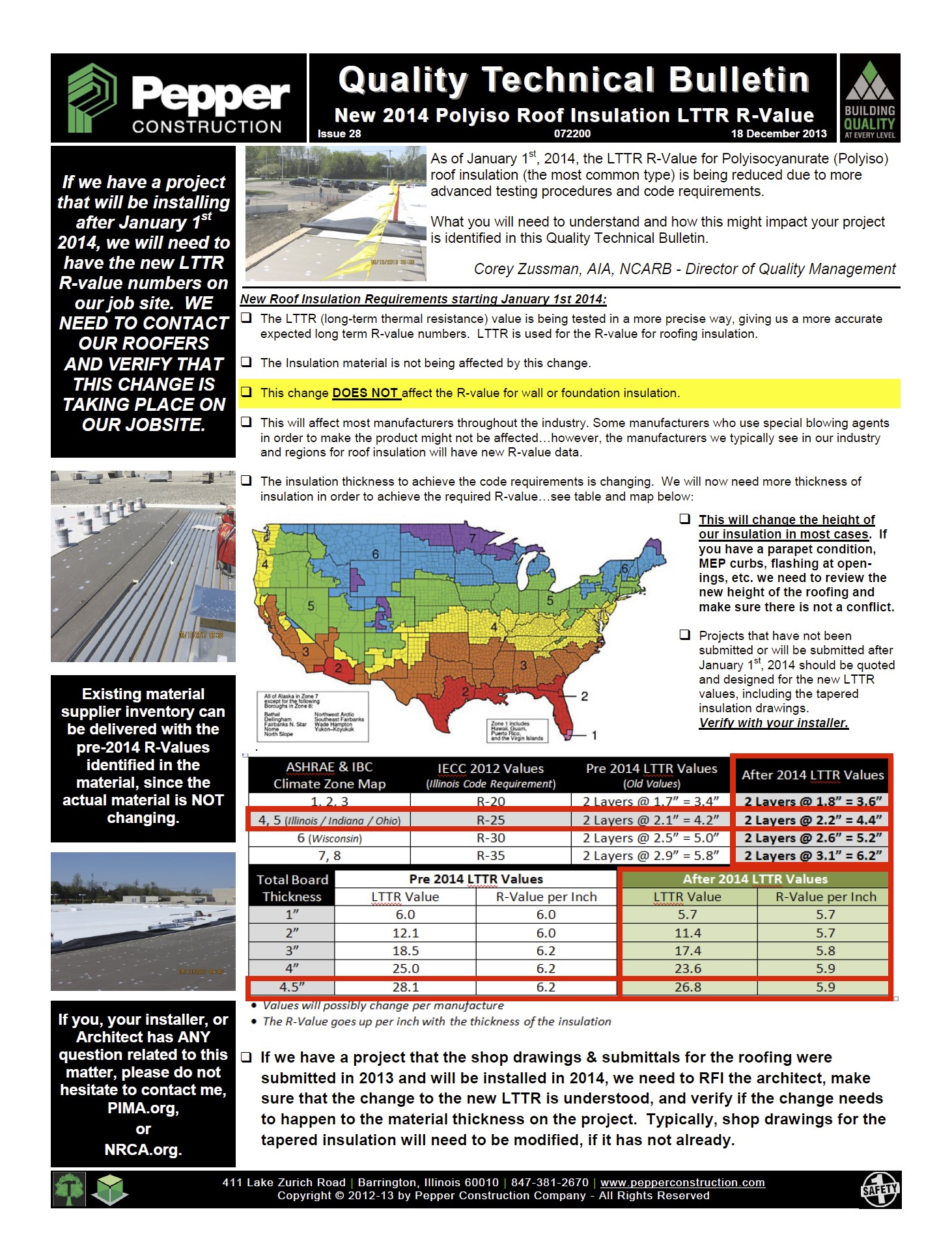
New Roof Insulation LTTR - Issue 28
- Corey S Zussman, AIA
- Link
As of January 1st, 2014, the LTTR R-Value for Polyisocyanurate (Polyiso) roof insulation (the most common type) is being reduced due to more advanced testing procedures and code requirements.What you will need to understand and how this might impact your project is identified in this Quality Technical Bulletin.
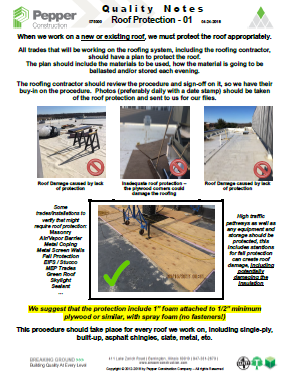
Roof Protection 01 - QN
- Corey S Zussman, AIA
- Link
When we work on a new or existing roof, we must protect the roof appropriately. All trades that will be working on the roofing system, including the roofing contractor, should have a plan to protect the roof. The plan should include the materials to be used, how the material is going to be ballasted and/or stored each evening.
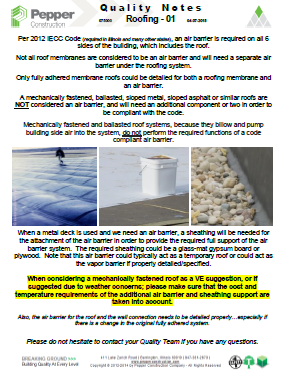
Roofing 01 AVB Mechanically Fastened - QN
- Corey S Zussman, AIA
- Link
Per 2012 IECC Code (required in Illinois and many other states), an air barrier is required on all 6 sides of the building, which includes the roof. Not all roof membranes are considered to be an air barrier and will need a separate air barrier under the roofing system. Only fully adhered membrane roofs could be detailed for both a roofing membrane and an air barrier.
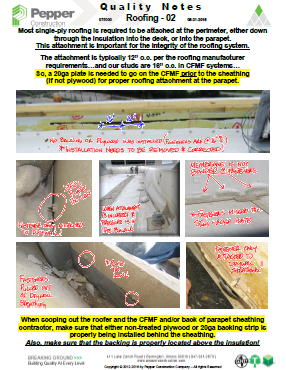
Roofing 02 Attachment CFMF - QN
- Corey S Zussman, AIA
- Link
Most single-ply roofing is required to be attached at the perimeter, either down through the insulation into the deck, or into the parapet. This attachment is important for the integrity of the roofing system.
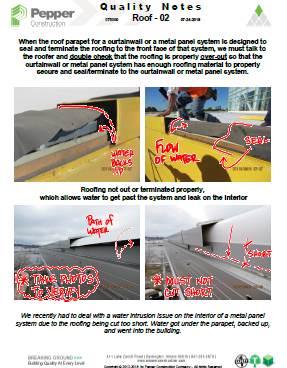
Roofing 02 Curtainwall-Metal Panel - QN
- Corey S Zussman, AIA
- Link
When the roof parapet for a curtainwall or a metal panel system is designed to seal and terminate the roofing to the front face of that system, we must talk to the roofer and double check that the roofing is properly over-cut so that the curtainwall or metal panel system has enough roofing material to properly secure and seal/terminate to the curtainwall or metal panel system.
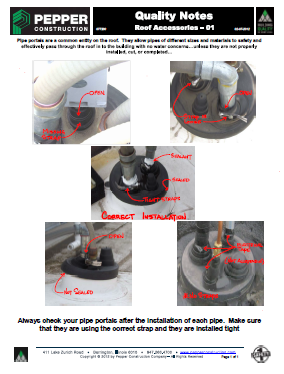
Roof Accessories 01 Sealing Penetrations - QN
- Corey S Zussman, AIA
- Link
Pipe portals are a common entity on the roof. They allow pipes of different sizes and materials to safety and effectively pass through the roof into the building with no water concerns, unless they are not properly installed, cut, or completed.
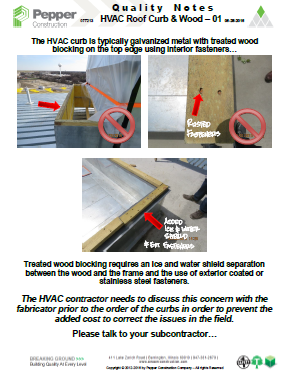
HVAC Roof 01 Treated Wood on Curbs - QN
- Corey S Zussman, AIA
- Link
The HVAC curb is typically galvanized metal with treated wood blocking on the top edge using interior fasteners. Treated wood blocking requires an ice and water shield separation between the wood and the frame and the use of exterior coated or stainless steel fasteners.
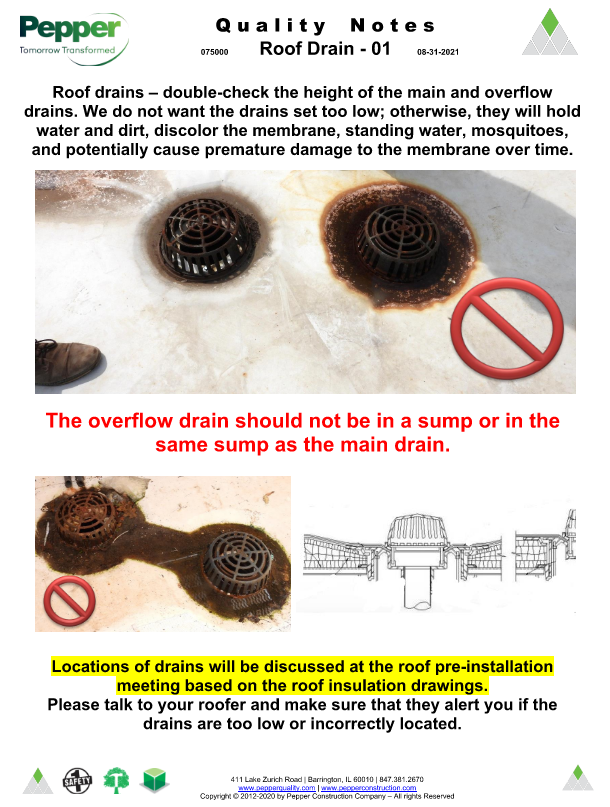
Roof Drain 01 - QN
- Corey S Zussman, AIA
- Link
Double-check the height of the main and overflow roof drains. We do not want the drains set too low; otherwise, they will hold water, dirt, discolor the membrane, any standing water will encourage mosquitoes, and potentially cause premature damage to the membrane over time.
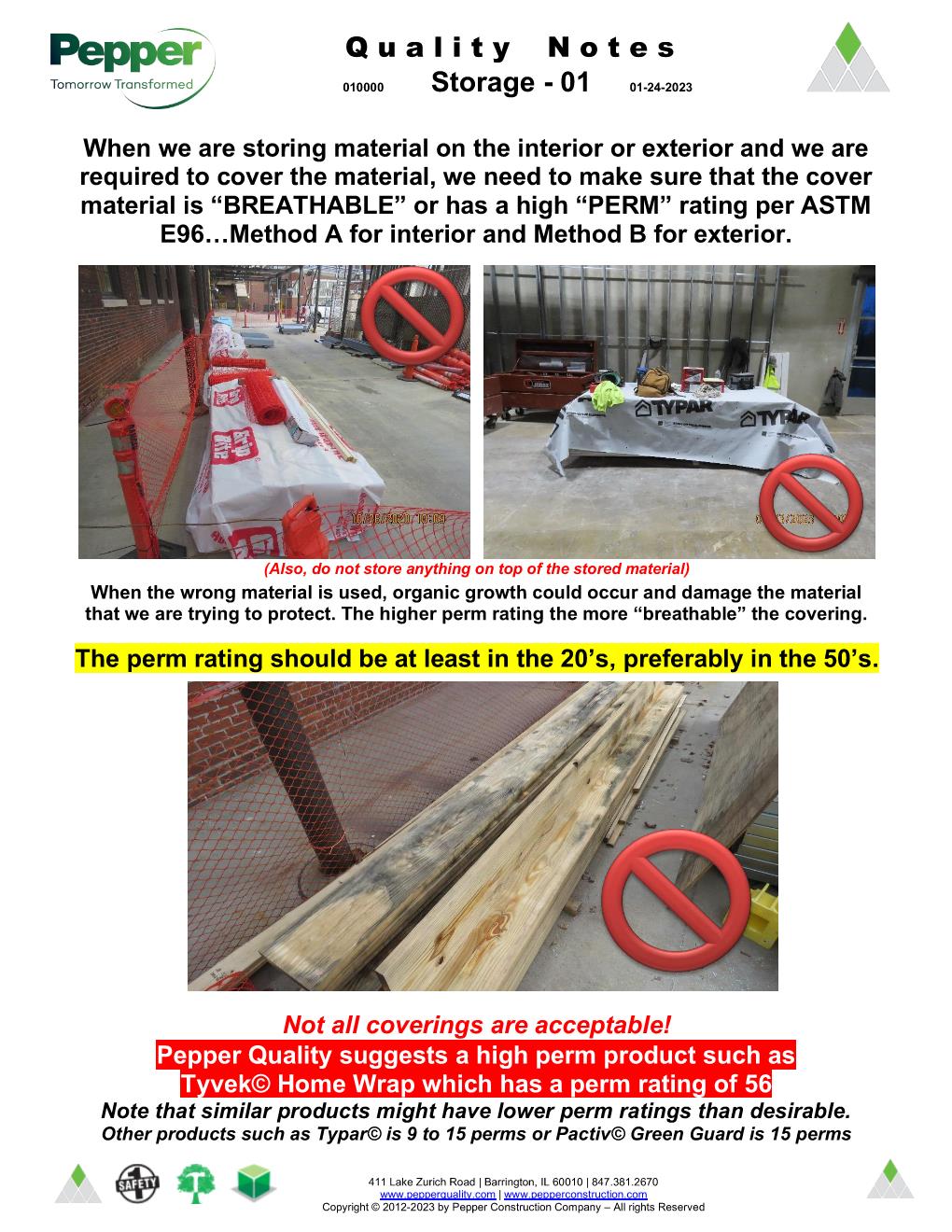
Wood Storage Concerns QN
- Corey S Zussman, AIA
- Link
When we are storing material on the interior or exterior and we are required to cover the material, we need to make sure that the cover material is “BREATHABLE” or has a high “PERM” rating per ASTM E96…Method A for interior and Method B for exterior.
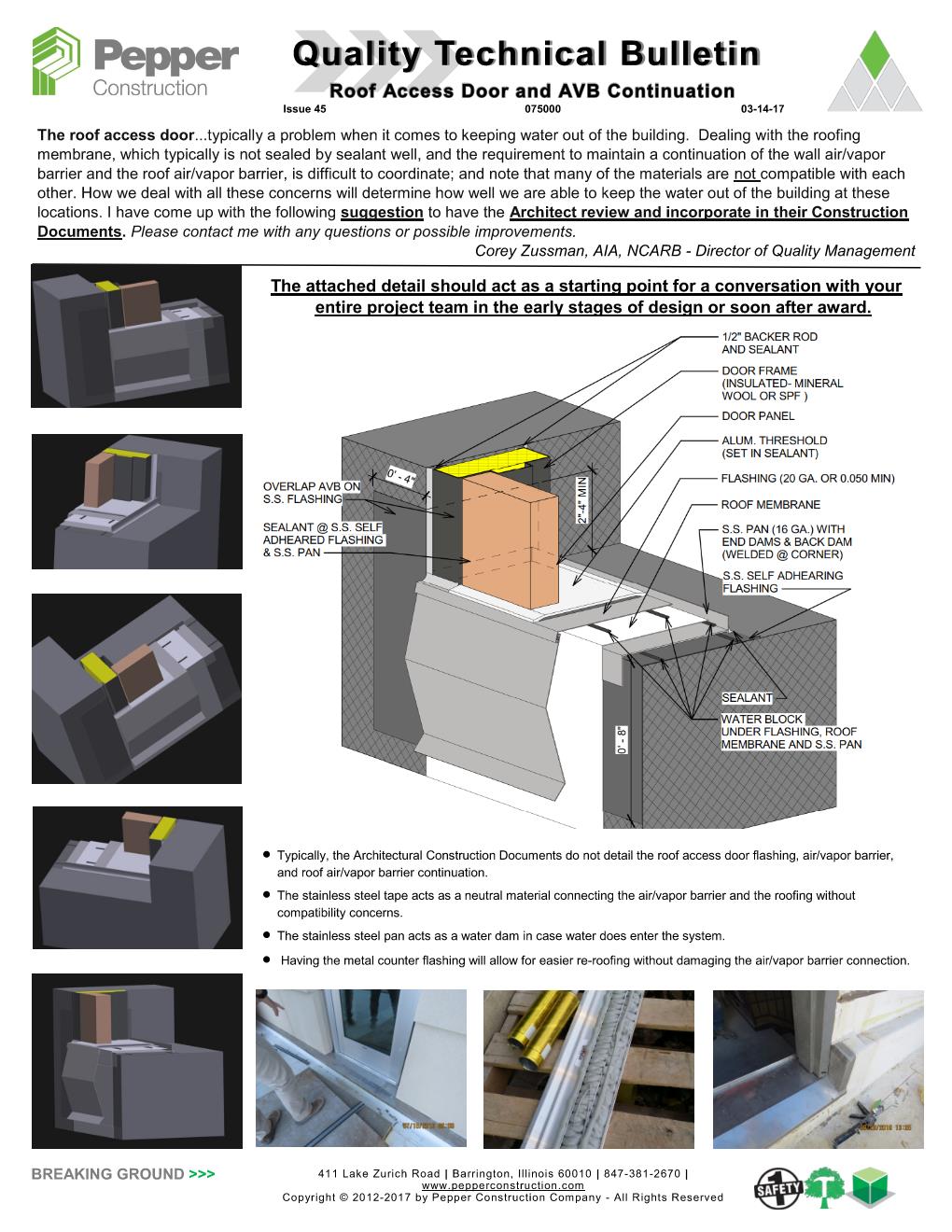
Roof Access Door Sill Detailing Issue 45
- Corey S Zussman, AIA
- Link
The roof access door...typically a problem when it comes to keeping water out of the building. Dealing with the roofing membrane, which typically is not sealed by sealant well, and the requirement to maintain a continuation of the wall air/vapor barrier and the roof air/vapor barrier, is difficult to coordinate; and note that many of the materials are not compatible with each other. How we deal with all these concerns will determine how well we are able to keep the water out of the building at these locations. I have come up with the following suggestion to have the Architect review and incorporate in their Construction Documents. Please contact me with any questions or possible improvements.

Concerns with Roof Concrete Issue 26r
- Corey S Zussman, AIA
- Link
Concrete on roofs are fairly typical, especially in hospital construction. The concrete used could either be normal-weight or structural light-weight concrete. Both pose challenges with the roofing installation, however, light-weight concrete is found to be more challenging due to the elevated moisture with-in the slab from the aggregate. More attention has been given to this topic and the NRCA letter regarding this topic which I have summarized the letter below along with action items that we should to take as responsible Contractors. As Contractors, we need to be concerned with this type of construction as we have no control over the drying process which negatively affects the roofing. When possible, during design, identify this concern with the design team early. This of course is not always possible when we are not part of the design process, however, we should still discuss the concern and try and work out a plan to alleviate the challenge. Also, note that this concern should also be reviewed for existing construction and re-roofing projects.
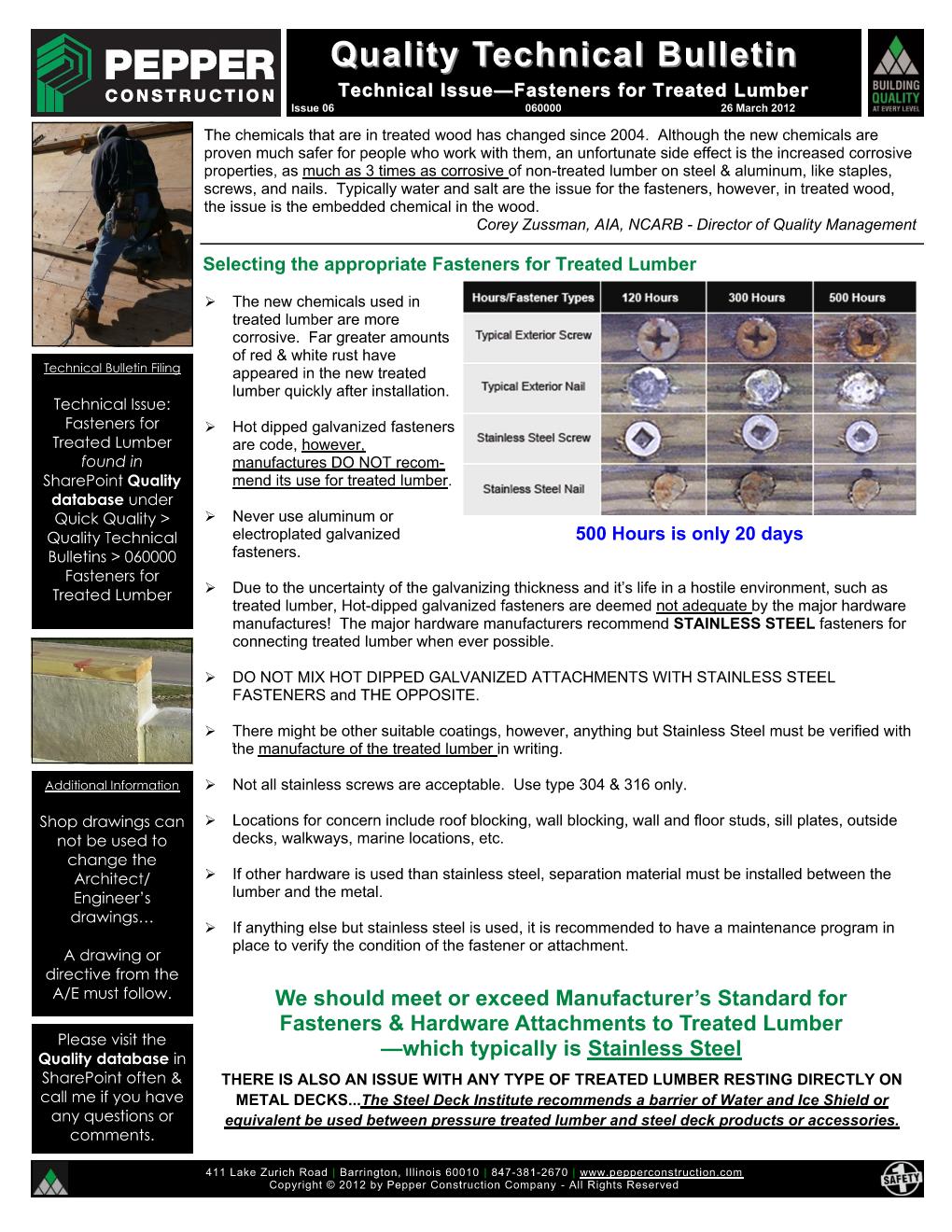
Fasteners for Treated Lumber Issue 06
- Corey S Zussman, AIA
- Link
The chemicals that are in treated wood has changed since 2004. Although the new chemicals are proven much safer for people who work with them, an unfortunate side effect is the increased corrosive properties, as much as 3 times as corrosive of non-treated lumber on steel & aluminum, like staples, screws, and nails. Typically, water and salt are the issue for the fasteners; however, in treated wood, the issue is the embedded chemical in the wood.
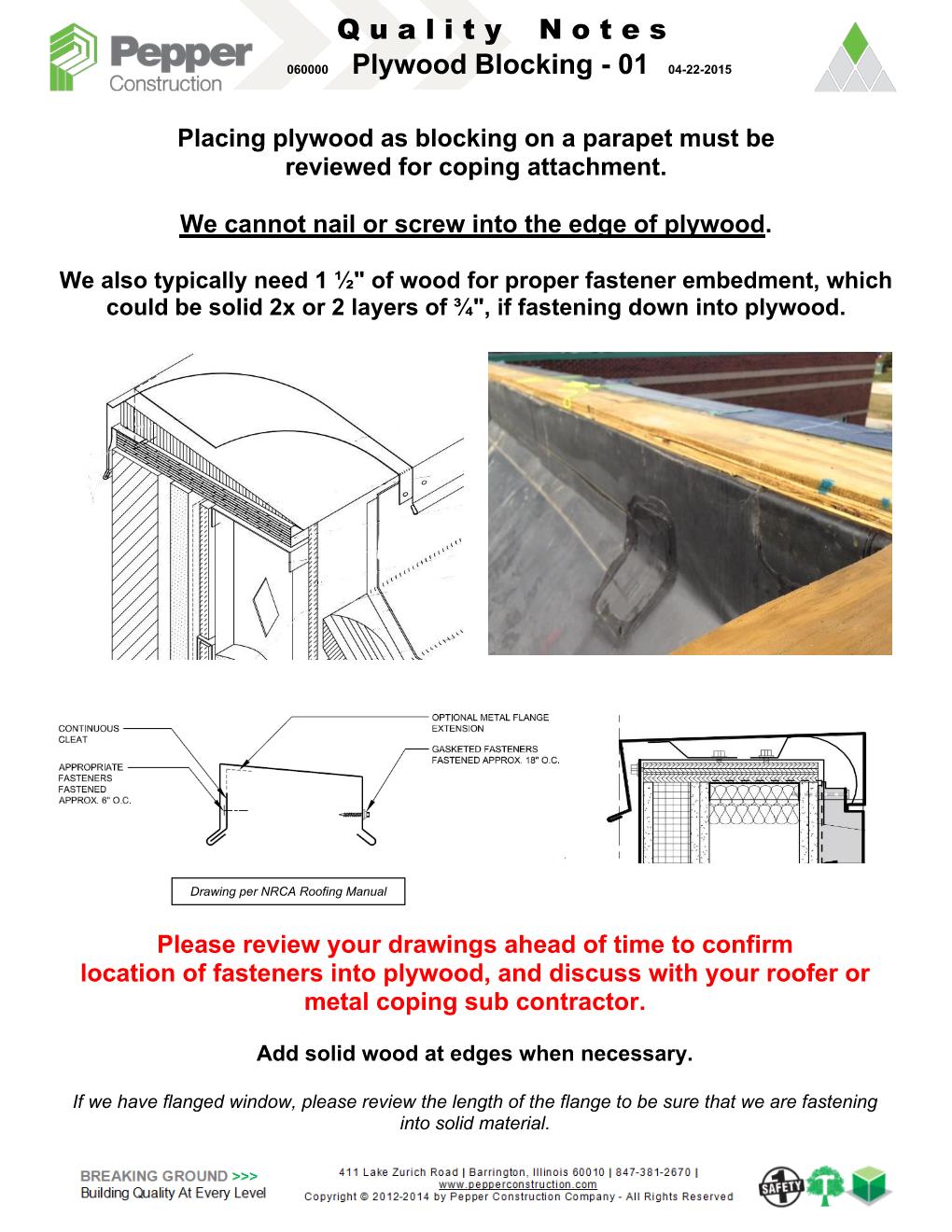
Plywood Edge Blocking 01 - QN
- Corey S Zussman, AIA
- Link
Placing plywood as blocking on a parapet must be reviewed for coping attachment. We cannot nail or screw into the edge of plywood. We also typically need 1 ½" of wood for proper fastener embedment, which could be solid 2x or 2 layers of ¾", if fastening down into plywood.
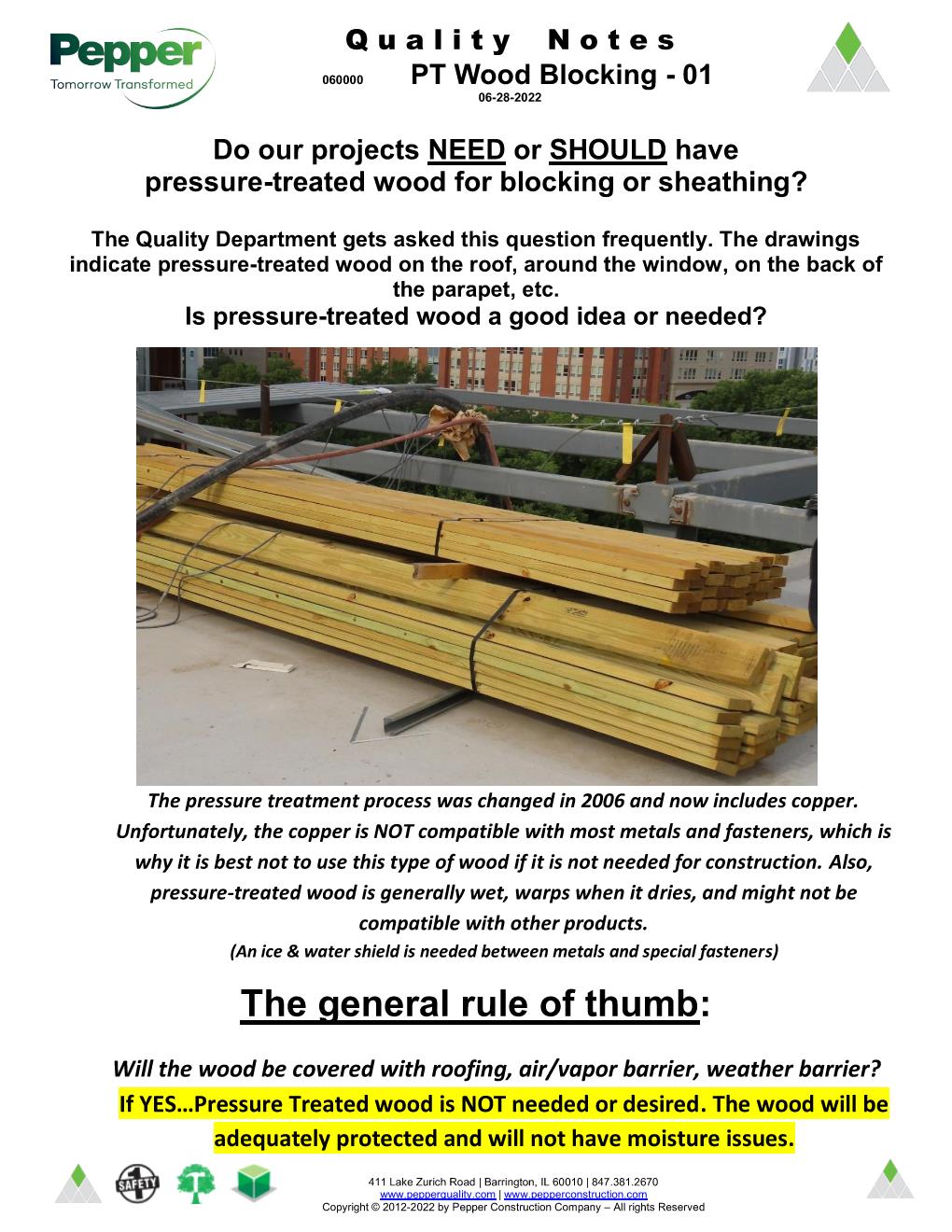
PT Wood Blocking 01 - QN
- Corey S Zussman, AIA
- Link
Do our projects NEED or SHOULD have pressure-treated wood for blocking or sheathing? The Quality Department gets asked this question frequently. The drawings indicate pressure-treated wood on the roof, around the window, on the back of the parapet, etc. Is pressure-treated wood a good idea or needed?
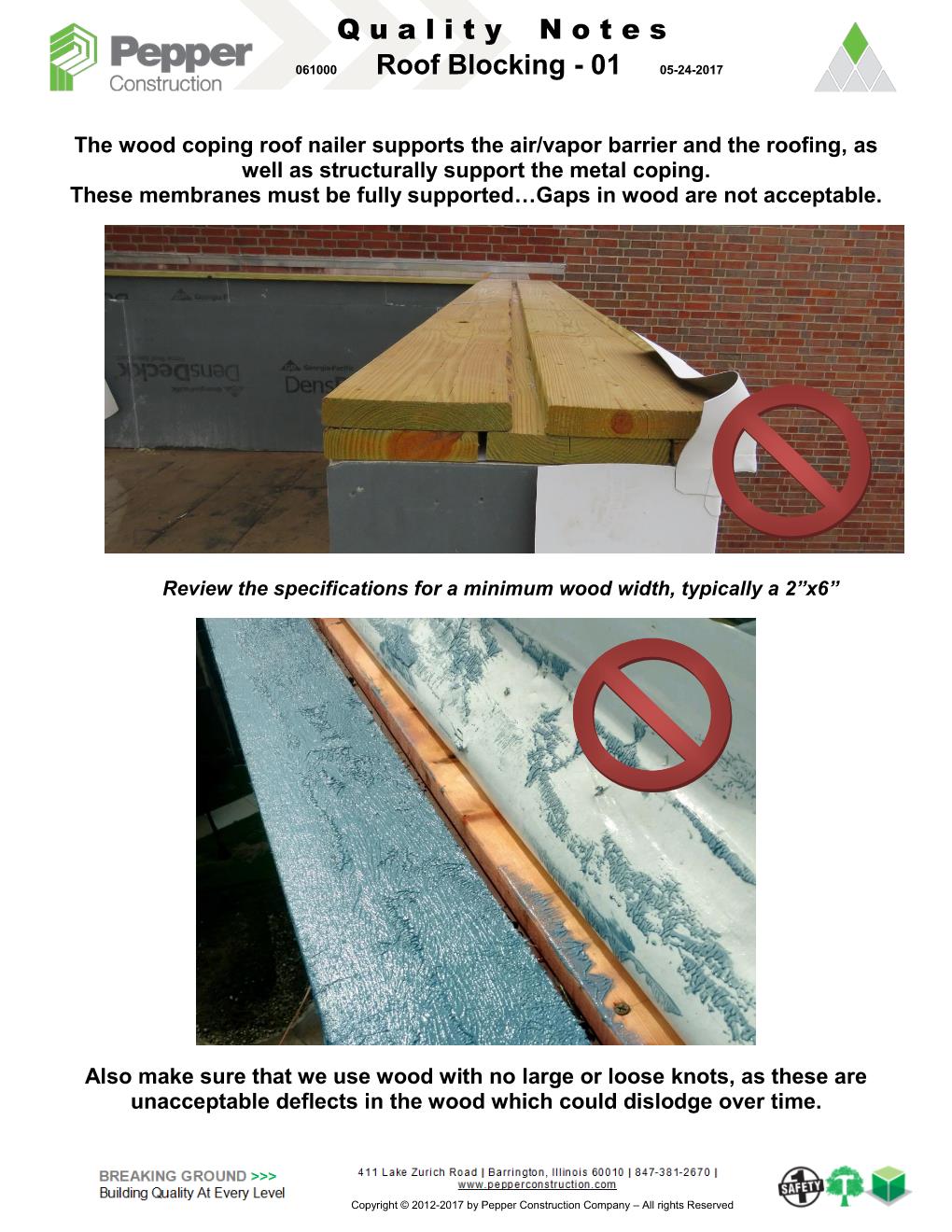
Roof Blocking 01 QN
- Corey S Zussman, AIA
- Link
The wood coping roof nailer supports the air/vapor barrier and the roofing, as well as structurally support the metal coping. These membranes must be fully supported…Gaps in wood are not acceptable.
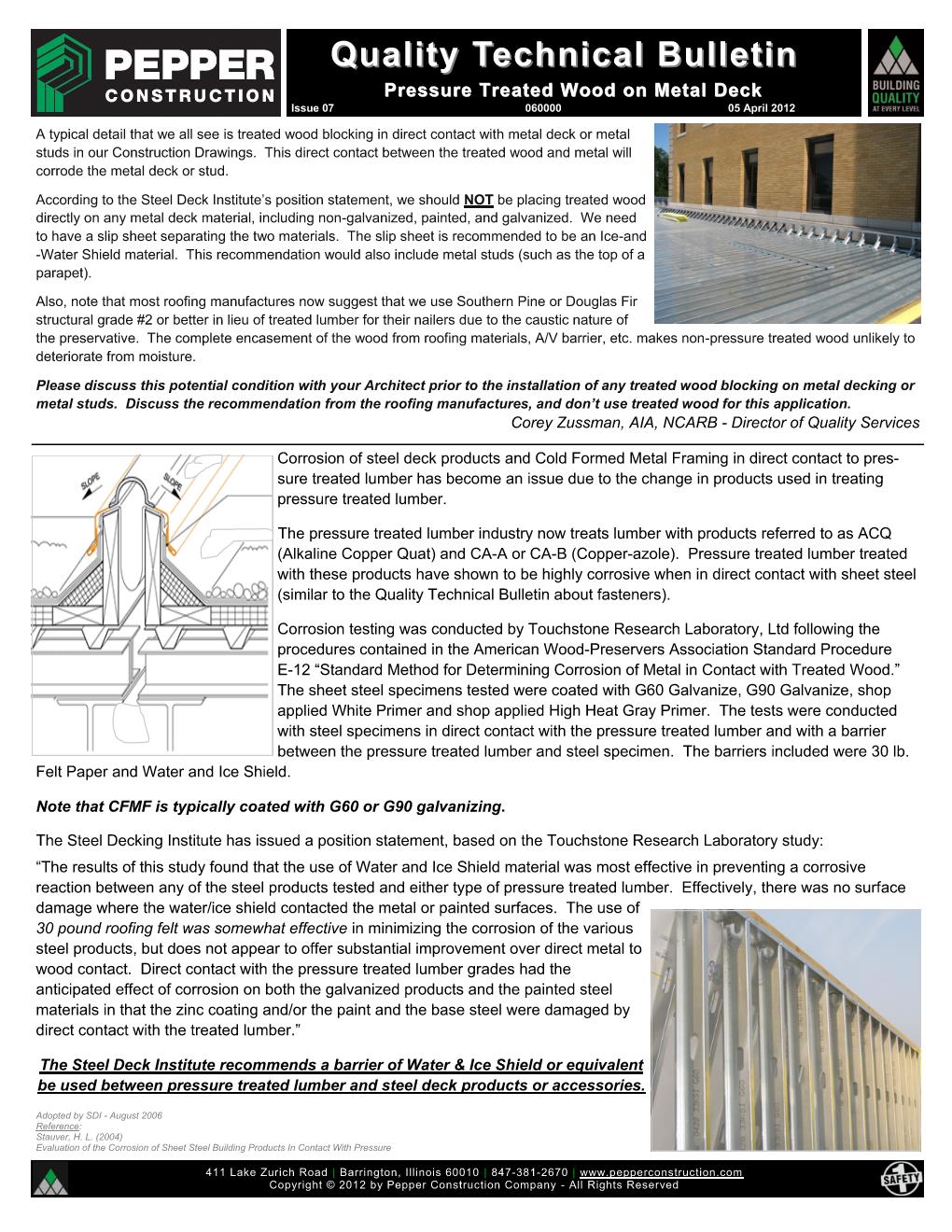
PT Wood on Metal Deck 01 Issue 07
- Corey S Zussman, AIA
- Link
A typical detail that we all see is treated wood blocking in direct contact with metal deck or metal studs in our Construction Drawings. This direct contact between the treated wood and metal will corrode the metal deck or stud. According to the Steel Deck Institute’s position statement, we should NOT be placing treated wood directly on any metal deck material, including non-galvanized, painted, and galvanized. We need to have a slip sheet separating the two materials. The slip sheet is recommended to be an Ice-and -Water Shield material. This recommendation would also include metal studs (such as the top of a parapet). Also, note that most roofing manufactures now suggest that we use Southern Pine or Douglas Fir structural grade #2 or better in lieu of treated lumber for their nailers due to the caustic nature of the preservative. The complete encasement of the wood from roofing materials, A/V barrier, etc. makes non-pressure treated wood unlikely to deteriorate from moisture. Please discuss this potential condition with your Architect prior to the installation of any treated wood blocking on metal decking or metal studs. Discuss the recommendation from the roofing manufactures, and don’t use treated wood for this application.
